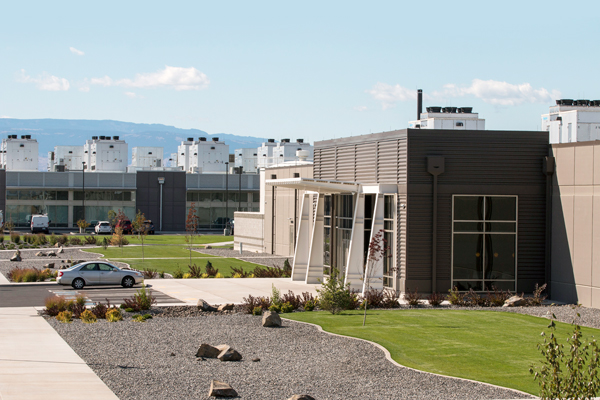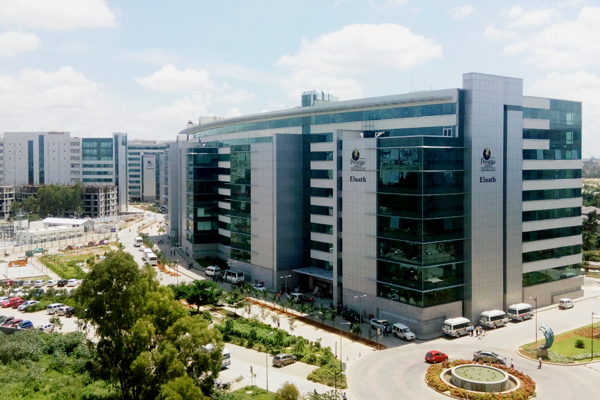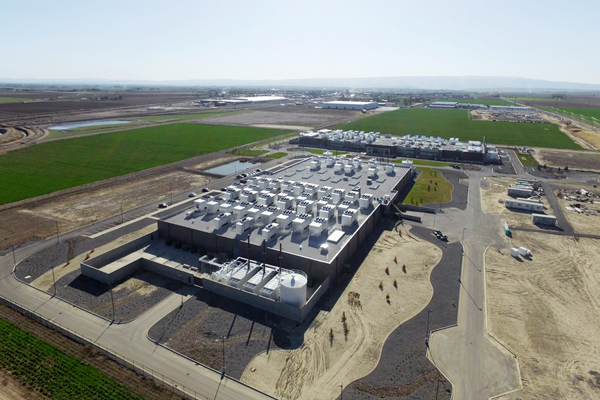When John Lucas was tasked with designing and building a new corporate headquarters for technology solutions provider Juniper Networks, connectivity, flexibility, and versatility were high on his list of priorities for the space.
“At Juniper, we believe an exceptional company is one that believes people and ideas are a company’s most valuable resource,” says Lucas, vice president of global real estate and workplace services. “We strive to create an atmosphere that encourages development, collaboration, and learning. Our idea of a company is more of a community. It’s a vision of a connected world, where Juniper employees can do their best work in an environment that anticipates and responds to employee work styles.”
Lucas uses flexibility to guide many of his projects, and the designs enabled spaces within in the headquarters to change depending on its inhabitants’ work styles.
“We have a diverse workforce spanning several generations and disciplines of work,” he says. “It was important to recognize this and provide workplace solutions that addressed the various needs. It was important that our employees could choose to be in a cubicle-like environment or in a very open environment.”
As a result, the work space won’t require costly renovations, because if teams move or change, the space can easily change along with it. Interestingly enough, even after the move to create a more open and collaborative environment, the private-cube environment was still embraced by some groups, which Lucas says is normal.

“Honestly, there was fairly strong resistance from our R&D engineers to move into the more open, collaborative workplace environment,” he says. “But after experiencing this environment, we observed that it was very easy for our engineering colleagues to have impromptu, collaborative moments in the new space. Then we started getting feedback that this dynamic in the office setting was great because of the opportunity for spontaneous conversation and quick problem-solving sessions. That’s been a very gratifying thing to observe, because this is exactly what the workspace design was intended to foster.”
During the design and discovery phase, Lucas says his team spent a great deal of time with the space’s future inhabitants, who asked for impromptu meeting spaces that didn’t require the formality (or scheduling needs) of conference rooms.
“We built drop-in spaces similar to conference rooms with whiteboards, and soft seating similar to a living-room environment that you could create and brainstorm in,” he says.
Nevertheless, the concept of impromptu drop-in space didn’t equate to how the space was actually used, and Lucas says there were still certain groups of employees that tended to be more comfortable in private, closed spaces. He chalked this up to the need for privacy—especially in groups when discussing ideas still in a raw state—and the desire to not to disrupt others who were occupying the shared space.
So Lucas and Juniper’s real estate team modified the areas to provide additional smaller, private conferencing spaces where one or two employees could focus or have private conversations. The flexibility throughout the headquarters resulted in all spaces being highly utilized and successful.
It’s Almost Sunnyvale in Bangalore
The success of its California headquarters served as the perfect blueprint for how Juniper now approaches its office refreshes—especially when it comes to overseas projects. However, leasing poses a different challenge for the company. The Sunnyvale offices are owned and operated by Juniper, but its other locations are not, so renovation timelines are driven more by lease dates and property locations.
With leases coming to an end at multiple Juniper sites throughout Bangalore, India, Lucas had to apply what his team had learned to its global footprint. Until recently, Juniper’s R&D operations in India were spread over three sites in the Bagmane Business Park.

“We had grown into those buildings over time,” Lucas says. Although the spaces were fairly contiguous, they were still broken up by buildings and floors. In some cases, engineers had to leave their building and walk over to the next building or hop in their car and drive down the road to complete daily tasks.
“Now we have 2,000 engineers in India, and it was getting harder for them to collaborate,” Lucas says.
The real estate team sought a three-to-five-year strategy where these offices could be consolidated and include room for growth. Juniper then moved its India-based operations into a single 250,000-square-foot buildout located in the Prestige Tech Park building in Bangalore. Lucas says the workplace study, design, and result is very similar to what Juniper completed in Sunnyvale. The underlying goal of the project was to bring parity, functionality, and flexibility to Juniper’s work environments—no matter where they are.
“Our engineers in Bangalore see parity between their environment and when they come to HQ,” he says. “They no longer feel like second-class citizens and they are reaping all of the same benefits of a flexible, collaborative environment that fosters great communication, accelerated problem solving, and, ultimately, faster time to market.”
Cloud and Clear
In nearly 13 years with Juniper, Lucas has found that he has a unique opportunity to get involved in projects that fundamentally engage with the company’s business units.
“The real estate work I’ve had a chance to lead has changed some of the ways that work is being done at Juniper,” he says. “Our projects have had a direct impact on how our people go about their work and what they do on the development of our products.”
One of the unique features of the Bangalore consolidation projects was the relocation of a large number of Juniper’s engineering labs. These expensive labs and data-center environments could be rethought to be more efficient than they had been before. Lucas and Juniper took the chance to create the first of what it has been dubbed as “geographic data centers,” or GeoDCs, which could remotely handle Juniper’s processing needs and consolidate the company’s engineering environment to make it more efficient.

Nevertheless, Lucas found that the infrastructure supporting the company’s engineering labs wasn’t ready to move to a consolidated, remote-access environment just yet, as Juniper’s lab processes weren’t set up to be run remotely. As a result, he had to work with the company’s leadership and R&D units to recognize this stumbling block, which led to questioning both the product design and the development process itself.
“Juniper had to create an engineering-development environment that was unlike how our engineers were used to working,” Lucas says. “We had to create our own private-cloud engineering environment to allow for remote access of our engineering equipment assets.”
The result was private-cloud capability and Juniper altering its methods to occur entirely on the cloud instead of locally. The engineering group began work with Juniper founder Pradeep Sindhu to reengineer how its day-to-day business was done. This resulted in, among other benefits, accelerated testing time. Regression testing—where a product is run through its paces to see how the code and hardware work together—was reduced from three days to just three hours, and, in some cases, 30 minutes.
“All of that culminated in modifying how our company goes about doing things,” Lucas says. “We now have this ‘Juniper on Juniper’ private-cloud development process, which is a fundamental change in the work process that greatly increases productivity.”
Lucas and the Juniper team built another private-cloud environment in Quincy, Washington, where the electrical utility costs are 12 cents per kWh lower than the company’s other engineering labs. This resulted in not only improved engineering productivity, but also a lower average utility cost by 12 cents per kWh. Lucas calls it a “huge win” for the company, and an example of how a real estate organization can engage with both executive management and the core business to drive lower operating costs while also increasing employee engagement, collaboration, and overall productivity.
“It’s been fun to be involved with that because the project originally started with a very myopic focus on real estate: find a place to build our labs in a lower-cost area,” Lucas says. “We ended up fundamentally changing how the company conducts business, making it more efficient and effective, and still accomplishing our real estate goals.”


